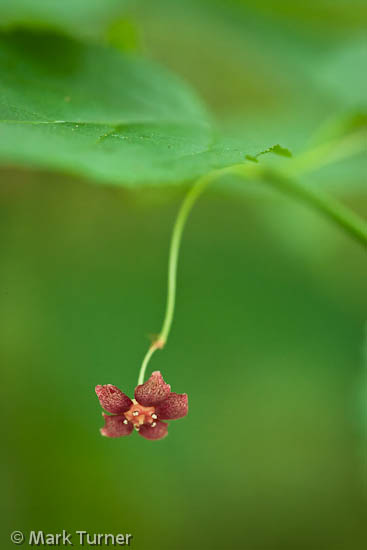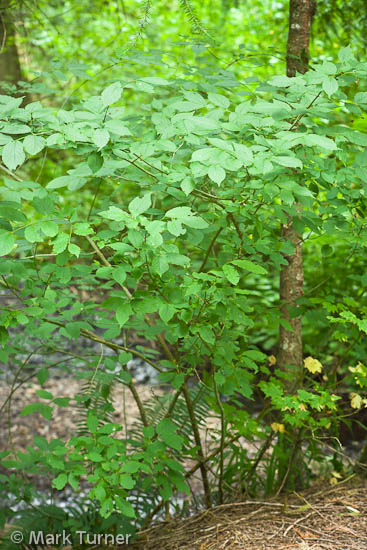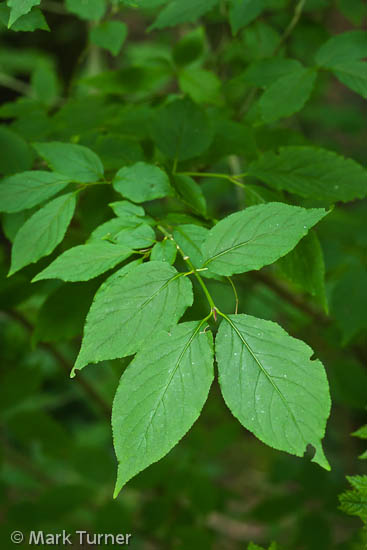Wahoo!
 Western Wahoo, otherwise known as Western Burning Bush or Euonymus occidentalis, is an uncommon shrub in the forests of southwest Washington. In fact, it’s considered a sensitive species and the online herbarium records withhold the exact locations of the specimens.
Western Wahoo, otherwise known as Western Burning Bush or Euonymus occidentalis, is an uncommon shrub in the forests of southwest Washington. In fact, it’s considered a sensitive species and the online herbarium records withhold the exact locations of the specimens.
In Oregon, Western Burning Bush is scattered in northwestern counties and occasional elsewhere west of the Cascades. A friend pointed me to a roadside population along Oregon Route 6 northwest of Forest Grove.
Wahoo is more common in California where it’s found in several counties, mostly in the northwest and along the central coast. But it’s not common anywhere in the region.
Wahoo grows in shaded forest habitats as a rather straggly understory shrub. It would be easy to miss it if you weren’t looking for it. Which is exactly what I was doing last Tuesday.
A fellow member of the Washington Native Plant Society alerted me to a sizable population of Wahoo growing in Lewis and Clark State Park, south of US 12 east of Chehalis. I don’t hesitate to tell you that it’s there because within the park it’s a protected population of plants. Another WNPS friend said she was growing it in her Olympia garden where it had bloomed a couple of weeks earlier.
 So I drove a couple of hundred miles down I-5 to find and photograph another plant I’d never seen, that I wasn’t sure I’d recognize, and that might have finished blooming. I pulled into the park, parked my rig, and started walking along the short loop road through the old-growth forest looking for a waist-high shrub with opposite leaves. It didn’t take me long to find one, up against the trunk of a bigleaf maple. I looked around some more and found a few flowers on another plant. That’s the specimen in the photograph at the top of the post.
So I drove a couple of hundred miles down I-5 to find and photograph another plant I’d never seen, that I wasn’t sure I’d recognize, and that might have finished blooming. I pulled into the park, parked my rig, and started walking along the short loop road through the old-growth forest looking for a waist-high shrub with opposite leaves. It didn’t take me long to find one, up against the trunk of a bigleaf maple. I looked around some more and found a few flowers on another plant. That’s the specimen in the photograph at the top of the post.
The blossoms, which are usually in clusters of three rather than solo, dangle on thin peduncles (the technical word for the stem of an inflorescence) beneath the foliage. That means you really have to look for them; they’re easy to miss in the dark forest.
As I continued on around the loop road I found several more plants, including a fairly substantial specimen more or less out in the open at an intersection where it got a little more light. That’s the one pictured to the right.
I’ve been unable to find a reference stating whether our native Euonymus has the striking fall color that its name suggests. Hitchcock (Vascular Plants of the Pacific Northwest v 4 p 409) says, “This species is probably to be classed as a botanical collector’s item, rather than a plant of much horticultural merit.” He doesn’t say anything about fall color. An online search did turn up a couple of nurseries that carry it.
 Photographing Wahoo was a challenge. It was dark in the woods, particularly so under gloomy gray skies threatening rain. There was a bit of a breeze. The flowers are less than a centimeter across. My solution included my trusty 100mm macro lens, camera on the tripod, and a small reflector held just out of frame underneath the blossom to bounce as much light upward into the dark red flower as possible. I set my camera to ISO 800 and did a custom white balance. Even so, 1/40th at f/7.1 was slow and I had to wait patiently for the blossom to stop wiggling.
Photographing Wahoo was a challenge. It was dark in the woods, particularly so under gloomy gray skies threatening rain. There was a bit of a breeze. The flowers are less than a centimeter across. My solution included my trusty 100mm macro lens, camera on the tripod, and a small reflector held just out of frame underneath the blossom to bounce as much light upward into the dark red flower as possible. I set my camera to ISO 800 and did a custom white balance. Even so, 1/40th at f/7.1 was slow and I had to wait patiently for the blossom to stop wiggling.
Making sense of a specimen image of the whole plant was another challenge. Here there was more light, but finding an angle to separate the plant from the background became the issue. That was a matter of moving from side to side until the shape showed as clearly as possible and there was a minimum of background distraction. In comparison this leaf detail was easy.
All of these images have had some work done in Adobe Lightroom to adjust the contrast.
I’ve become enough of a plant geek that I enjoy these searches for obscure species. I wonder what’s next?


Nice work, Mark! Now, if you can find a fairly mature tree without any other “brush” encumbrance & get a shot of the entire plant…
You have to go back & see them when the fruit is ripe! It’s a trip!
chow ^..^